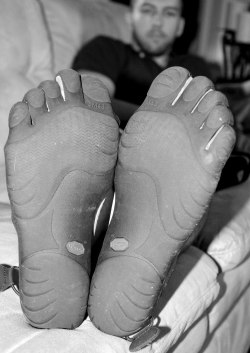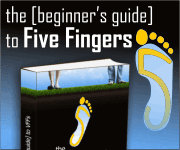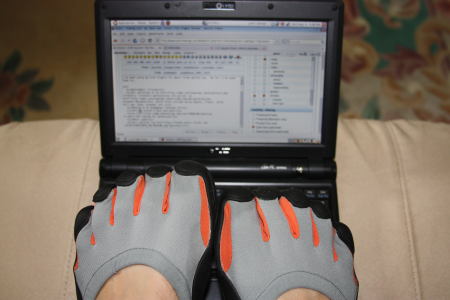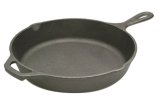Note: The following is written out of personal experience; I cannot attest to the application of any of this knowledge to shaving anything other than your face. Furthermore, this post is written mainly for men and/or manly women.
Henry David Thoreau, from Walden:
I wanted to live deep and suck out all the marrow of life, to live so sturdily and Spartan-like as to put to rout all that was not life, to cut a broad swath and shave close, to drive life into a corner, and reduce it to its lowest terms, and, if it proved to be mean, why then to get the whole and genuine meanness of it, and publish its meanness to the world; or if it were sublime, to know it by experience, and be able to give a true account of it . . .
On Shaving
To shave or not to shave? For the modern man, shaving is a necessary precursor to social interaction. Though going a day or two without shaving won’t make you a pariah, prolonged failure to trim, crop or clean-up your beard will result in any number of strange looks or even questions regarding your hygiene, employability and/or philosophical disposition.
Therefore, the question of shaving is rarely a question of whether or not to shave at all, but rather a question of how much or what to shave. Even those of us who can’t grow much facial hair (young adolescents and arguably more evolved men) must still shave or face a purgatory of scraggly-unkempted-ness.
For the rest of us, facial hair options abound: from going for the clean-shaven look to growing a full beard, goatee, mustache, or sideburns (Or any number of other options!). Experimenting with different styles is fun, even if it may annoy significant others and uptight bosses. My go-to facial hair style is a neatly trimmed beard (See ablove).
The formed presence of facial hair on a man is distinctive, can add color and character to a man’s face, is fun and a bit daring, reservedly masculine and can even help offset thinning hair and/or receding hairlines (For folks like me anyway).
Though facial hairstyles still require maintenance, trimming a beard once every week or two with clippers is still faster than shaving that same surface area every day. That’s even accounting for still having to shave daily the clean-shaven parts the face. Overall, bearded men spend less time shaving. It’s a perk.
Lest we forget, you can always go back to the babyface if you get tired of the scruff!
On Shaving Cream
Jeffrey Tucker over at Lew Rockwell wrote a life-changing article back in April 2006 titled The Shaving Cream Racket. If you’ve got the time, I suggest you read it for the humor. Here’s the gist:
[S]omeone has to say it: shaving cream is a racket. . . .
Wean yourself from it for a week, and you will find that your shaves will be closer, unbloody, and quick. Imagine a full shave in less than a minute, with no cuts, gashes, or discomfort. It is within your grasp. . . .
The problem is this. Shaving cream . . . somehow weakens the pores and makes the top layer [of skin] mushy and unresponsive. The kid comes to believe that somehow the foam is essential to the experience. Without it, surely the razor would leave a trail of blood.
But [when using shaving cream] strange things start to happen. Red lumps appear. The shaved skin comes to feel sort of strange, oddly sensitive to temperature changes and ever more vulnerable to being sliced and diced.
People think: oh I need a new razor! So they go out and buy ever more fancy brands, with multiple blades, pivoting heads, strange lubricants, and push-out tools to deposit the hair remains in the sink.
They don’t consider that it might be the shaving cream that is the source of the trouble.
Why don’t people imagine this possibility? Because shaving cream seems so frothy and innocent, the glorious barrier that stands as a guard or shield between your skin and the sharp blade. The cream is our valiant protector, so surely that is not the source of the problem!
In fact, it is not our protector. Shaving cream is destroying your skin, turning it into a whining, pathetic, dependent, beaten, insipid layer of pasty pulp.
What is the alternative to shaving cream? Water. Yep, that cheap stuff that comes out of your faucet. After you shower, towel off, hop out, grab your razor, wet it at your sink and start shaving. It is that simple. Your shaving time and experience will both improve drastically.
I’ve not used shaving cream or gel now for over two years. I rarely ever cut myself shaving. As for razor burn, rashy bumps, etc.? They never happen anymore. After you read the next section on razors, my testimony may seem even more amazing.
The majority of time wasted shaving is in the application and management of shaving cream or gel. You’re better off without this pointless junk. Reclaim the time, save money, and save your skin. Afterwards, spread the news: shaving cream is a racket!
On Razors
Everyone has a razor preference. One of the pivotal questions is disposable or electric. Within each of those categories, there are all types of sub-categories still; for example, there are the cheap one-blade razors and the more expensive multi-blade varieties. For this discussion, the razor in question is the Gillette Fusion (Though I used the Mach 3 prior to the Fusion with similar results).
The Fusion has five blades that do the bulk of the shaving. There is a sixth blade reverse to the main five that is intended for trim work which I’ve found somewhat useful. I like the Fusion even as it is absurdly expensive and the Mach 3, which it replaced, was doing a plenty fine job.
Since you’ve now determined to give up shaving cream, I’m going to let you in on another secret that Gillette and other disposable-razor makers don’t want you to know: minerals in your water will degrade the razor blade (make it dull) over time! How does this work? After you rinse your razor blade, the water that is left on the blade will evaporate and leave trace minerals behind on the blade. Over time, these mineral deposits build up and effectively dull the blade.
An easy fix? Simply dry your razor blade on a towel after you rinse it. For me, I make a single with-the-grain swipe of the razor against my bath towel, which is usually around my waist at the time. It takes a full second to do this and it will absolutely prolong the use of your razor blades.
Skeptical? I’ve been using the same Gillette Fusion razor head for a year now. Yes, a year on a single “disposable” razor blade. True, most of that year I’ve had some level of bearded-ness, which has cut the shaving-surface area on my face down a good bit; however, as noted above, I don’t use any creams or gels and the areas I do shave daily tend to be the more sensitive parts of the face — as in, my neck. Even having used the same blade for more than a year, lubricating my face with only water, I still don’t get razor burn, cuts or bumps. Lo and behold, there have been studies that show drying your razor increases its life. It would seem that my results with blade drying have been replicated by others:
If water causes rusting, and rusting is the main culprit of blade dullness, then, presumably, drying your razor blades could increase the life of blades. A high-profile test of this happened when consumer-advocate radio host Clark Howard of Atlanta used a 17-cent disposable razor for an entire year. He said he extended blade life by blotting his razor dry with a towel after use.
Howard’s report intrigued Atlanta resident Brian Cohn, who then tried it himself. Cohn said his results weren’t quite as good but still amazing. Instead of blades lasting the usual 10 days to two weeks, his blades lasted five to six months.
Save money. Dry your disposable razor blades after use.
Put it all together and what do you get?
- Maintaining some amount of facial hair will result in less shaving/facial hair to maintain,
- Shaving creams and gels are a waste of both time and money and seem to do more harm than good for your skin, and
- Drying your disposable razors after rinsing them will make them last much longer.
All of the above will save you money, too. Let me know how these tips work for you.
Grind Skills Reading








